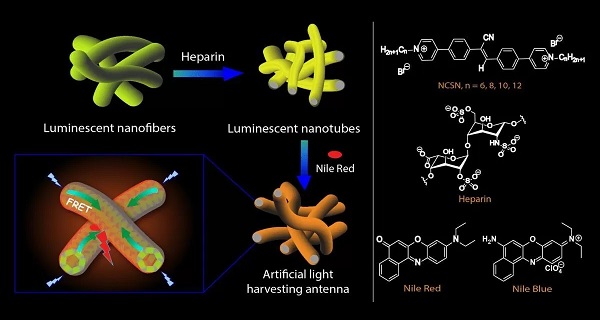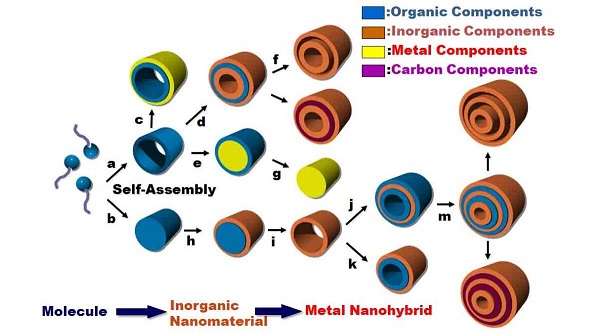A group of Indian scientists has made a groundbreaking discovery in the field of artificial light harvesting. Inspired by the natural process of photosynthesis, the researchers from the Indian Institute of Science Education and Research (IISER) Kolkata and the S N Bose National Center for Basic Sciences (SNBNCBS), Kolkata, developed a novel method using organic fluorescent molecule and a therapeutically important biopolymer.

These organic nanotubes have a range of potential applications, including solar cells, photo catalysis, optical sensors, and tunable multi-color light-emitting materials. Similar to how plants use chlorophyll to convert sunlight into energy, the scientists utilized the organic nanotube to absorb artificial light and transfer the energy to a dye molecule such as Nile Red and Nile Blue. The dye molecule then emits color tuning from initial greenish-yellow to orange-red, including white light.
Compared to traditional methods, this new approach is more efficient in harvesting artificial light and has the added benefit of producing a wider range of colors. The researchers believe that this breakthrough could pave the way for the development of advanced solar cells, optical sensors, and light-emitting devices.
The study detailing this innovative method was published in the esteemed journal Nature Communications. This publication highlights the significance and potential impact of the research conducted by the Indian scientists.
What are Organic Nanotubes?
Organic nanotubes are tubular structures made up of organic molecules such as carbon and hydrogen. They have a diameter of a few nanometers and can be several micrometers in length. These nanotubes are capable of absorbing light and converting it into electrical energy, a process known as photovoltaics.

Organic nanotubes have unique properties that make them attractive for use in various applications, including electronics, energy harvesting, and biomedical devices. They can be synthesized using a variety of techniques, including chemical vapor deposition, self-assembly, and electrochemical methods. The development of organic nanotubes has opened up new possibilities for generating electricity in a sustainable and environmentally-friendly manner.
Applications of Harvesting Artificial Light:
The new method holds promise for several practical applications:
– Solar cells: By Harvesting Artificial Light, more efficient solar cells can be designed, capable of converting a higher percentage of sunlight into electricity.
– Optical sensors: This method opens up the possibility of creating innovative optical sensors that can detect different types of light more accurately.
– Light-emitting devices: The newfound method enables the development of novel light-emitting devices that can produce a broader spectrum of colors, offering greater flexibility and customization.
The phenomenon observed in this research is called ‘Förster resonance energy transfer’ (FRET), and it plays a crucial role in various applications such as analyzing DNA/RNA structures, mapping biological membranes, and conducting real-time PCR tests.
While still in the early stages of development, this breakthrough has the potential to revolutionize the utilization and harvesting of artificial light. The Indian researchers, Dr. Supratim Banerjee and Dr. Suman Chakrabarty, envision a future where this method will transform the way we harness and employ artificial light.
Read the original article on Jagran Prakashan.







